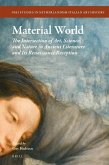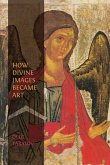Among Cycladic pottery s most idiosyncratic types is the vase known as the "nippled ewer." The term "nippled ewer" pertains to any pouring vessel that is adorned with relief breasts. These vessels have necks and beaks that lend them bird-like appearances. They also have two relief "nipples" painted in dark glaze on their receding profile. Occasionally they are adorned with painted swallows. Their iconography gives clues to the fundamental nature of Cycladic religion and the worship of a great female nature deity, especially in the years around 1600 BCE. The fusion of feminine and avian motifs is clearly related to the depiction of women in other media. Frescoes like those in Room 3 of Xeste 3 at Akrotiri illustrate bare-breasted women engaged in ritual before an enthroned goddess whose natural province includes a landscape inhabited by monkeys, griffins, and swallows. This research and interpretation suggests nippled ewers decorated with breasts and swallow images are most likelyartifacts of her cult used for some spring-time ritual.








